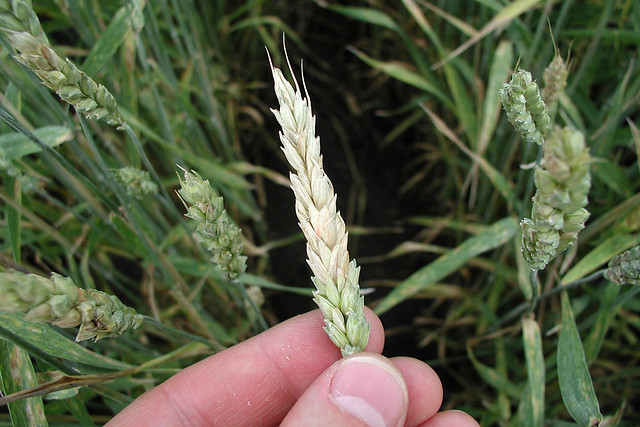
Fusarium head blight is a devastating fungal disease affecting wheat and barley crops worldwide. According to the American Phytopathological Society, this disease has cost U.S. wheat and barley farmers more than $3 billion since 1990. Agricultural Research Service (ARS) scientists, together with land managers and other scientists at research universities, are taking a variety of approaches to solving this problem. These include breeding resistant cultivars, using massive disease-forecasting models and applying fungicides during critical junctures in crop growth to prevent fusarium head blight. Recently, many scientists have also become interested in the idea of employing microbial species that already live on and inside crop plants to do the dirty work of controlling disease epidemics.
These microbes, known collectively as the “plant microbiome,” have a lot of natural impact on the plant host. Some microbial species are beneficial, helping the plant’s immune system to fight off enemies, while others can be harmful.
As part of a National Science Foundation-supported internship program, I have an opportunity to work with microbiologist Matt G. Bakker at the USDA-ARS research center in Peoria, Illinois, to identify beneficial bacteria from the wheat microbiome. I am pitting beneficial bacteria from wheat plants grown in Illinois against the Fusarium head blight fungus. We are comparing how the interactions of these two microbial adversaries differ when examined under laboratory conditions versus inside of plants. We want to answer questions like “Do lab-based measurements do a good job of predicting which bacteria are beneficial inside of actual wheat plants?” and “What do these bacteria actually do to derail the fungus or its development of disease in wheat?”
Although our research is in its early stages, we’ve already identified several potentially beneficial bacteria species. In future research, we hope to explore whether applying these bacteria to wheat seeds could help mature wheat plants resist Fusarium head blight. Additionally, we want to learn whether this preventive microbial treatment improves grain quality and prevents harmful compounds from accumulating.
More broadly, our research supports the “farm to fork” continuum, exploring ways to safeguard the food we eat and the economic well-being of producers.



